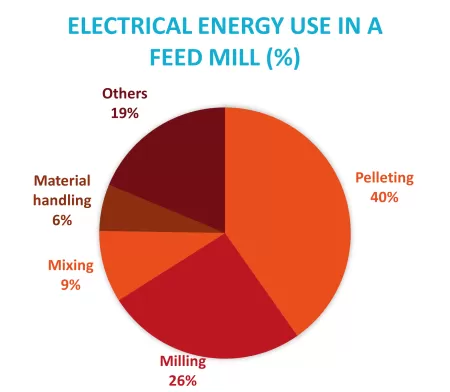Reducing energy consumption in the feed mill

“A lot of energy is required for the manufacture of animal feed”, says Zetadec director Menno Thomas. With increasing prices for gas and electricity, it is crucial to reduce energy consumption in the feed industry. At a symposium, organized by Schothorst Feed Research, Thomas shared some smart solutions to reduce energy consumption in the feed mill.
Electrical energy in the feed mill is mainly used for pelleting (40%), milling (26%), mixing (9%) and transportation of feed materials. Gas is used to generate steam for conditioning. Specific Mechanical Energy (SME, electricity) and Specific Thermal Energy (STE, gas) are both expressed in kWh per ton of feed. The total energy use in a feed mill amounts to around 50 kWh per ton of compound feed produced.
Transport, grinding and mixing are essential processes in the production of complete feeds, so it is difficult to reduce the consumption of electrical energy in a feed mill, however, a Decision Support System like FMath (www.properzeta.com) can help to attain this by advising optimal settings on the pelleting line. Implementing these optimal settings may lead to a 20-25% reduction in electrical and steam energy consumption.
Higher conditioning temperatures in pelleting require more steam, and, therefore, more gas. Zetadec research shows that every 10 oC reduction in conditioning temperature reduces thermal energy consumption by approximately 5 kWh/ton. Cold pelleting or no pelleting at all (producing mash feeds) are ways to cut back on gas expenditure.
By combining big data collection and feed processing knowledge, Zetadec can guide you towards solutions to optimize feed processing and reduce energy consumption in the feed mill. Moreover, Zetadec performs audits in factories, focusing on the current energy consumption and solutions to reduce energy consumption without negatively affecting feed quality parameters.